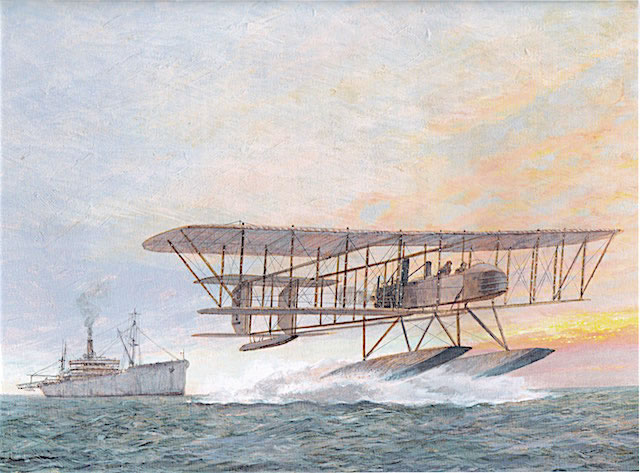S u m m a r y : |
Title and ISBN: |
Osprey/ New Vanguard Publishing
World War I Seaplane and Aircraft Carriers
by Mark Lardas, illustrated by Paul Wright
ISBN: 978-1-4728-1378-7 |
Contents & Media: |
Soft-cover format; 48 pages; black and white photographs; full-colour plates. |
Price: |
£10.99 plus postage available online from Osprey Publishing, and from specialist book and hobby shops.
Also available from Osprey as an ePub (ePub or PDF) for £9.99. |
Review Type: |
First Read. |
Advantages: |
Interesting subject matter; well structured, written and illustrated. |
Disadvantages: |
Some of the photos are quite small. |
Conclusion: |
Short, focused and well written, this book is an excellent primer on World War I naval aviation. I read it in a session and learned a great deal in the process – highly recommended. |
Reviewed by Brad Fallen

HyperScale is proudly supported by Squadron
It’s hard to think of a better introduction to the first years of naval aviation than this title from Osprey’s prolific New Vanguard series. In only 48 pages, author Mark Lardas provides a fascinating summary of how the World War I belligerents used aviation to enhance sea power.

Lardas’s writing style is engaging, and keeps the reader interested in a subject that could easily be dry and boring. A key ingredient of his success is how he keeps the story moving by telling it from three different perspectives – historical overview, operational, and technical. This device enables Lardas to set the strategic scene before exploring military aspects in more depth, and is reflected in the book’s structure as follows:
- Introduction (actually more of a vignette where Lardas describes the first successful landing of an aircraft on a ship, by Eugene Ely in San Francisco in January 1911)
- Development of Naval Aviation
- The Royal Navy
- The Central Powers
- The Mediterranean Powers: France and Italy
- Japan, Russia and the United States
- Operational History
- 1914-15
- 1916-17
- 1918
- Afterwards
The Ships – this section is mainly tables, which list key statistics of the ships in question including displacement, dimensions, speed, armament and aircraft carried.
- Great Britain
- Germany
- France
- Russia
- Italy
- Japan
- A small but well-selected Bibliography.
Also present and welcome are contents and index pages – while neither is really necessary in a book of this length, they are helpful in navigating the myriad of dates, locations, ship names and other details that Lardas has included.
Lardas’s words are well complemented by a series of colour plates by Paul Wright. Wright’s artwork includes both dramatic shipboard and aviation scenes (for example, of HMS Ben-My-Chree being destroyed by Turkish gunfire, or a Japanese Maurice Farman Type F taking off on the first ever naval air strike) and informative profiles.
There is also a good selection of black and white period photos, although these are mostly small and therefore sometimes difficult to see clearly. Overall production quality is good, with sensible formatting, high quality printing and thorough editing.
I picked up this book with reasonably low expectations – at first glance the subject didn’t seem particularly exciting. However I was very pleasantly surprised, reading it in a session and learning a great deal in the process. The book is very much a primer, aimed at informing readers new to the field, and encouraging those who are interested to delve more deeply into the first years of naval aviation.
Highly Recommended
Thanks to Osprey Publishing for the sample.
Review Copyright © 2016 by Brad Fallen
This Page Created on 24 February, 2017
Last updated
24 February, 2017
Back to HyperScale Main Page
Back to Reviews Page

|
